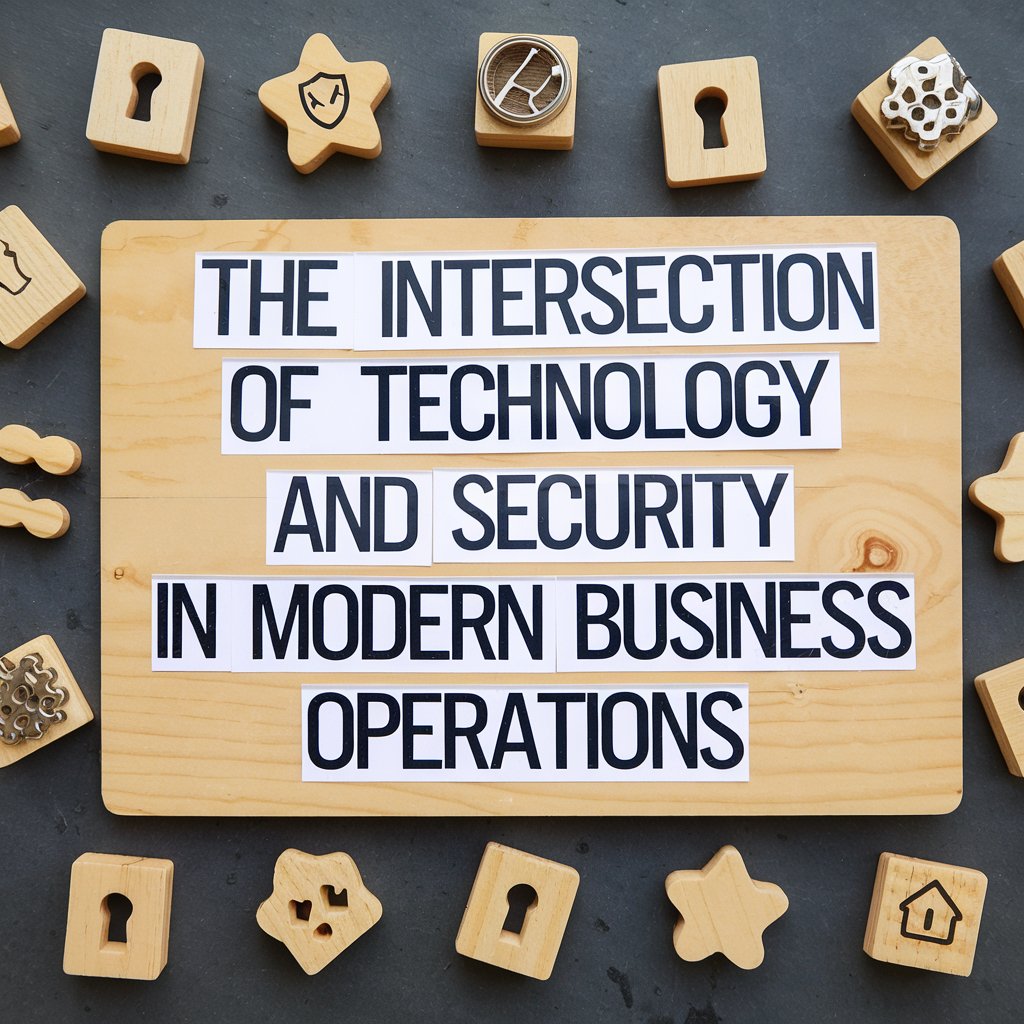Businesses today are increasingly dependent on digital solutions to streamline operations and enhance efficiency. As organisations integrate advanced technologies into their workflows, the need for robust security measures becomes more critical than ever. The intersection of technology and security is a focal point for companies aiming to protect their data, maintain client trust, and comply with regulatory requirements. This article delves into the essential aspects of cybersecurity and the best practices for implementing secure digital solutions. By understanding and adopting the right technologies, businesses can ensure their operations are both efficient and secure.
The Importance of Cybersecurity in Today’s Business Landscape
Cybersecurity is a fundamental aspect of modern business operations. With the rise of digital transactions and data storage, companies face numerous threats from cyberattacks. These threats can lead to significant financial losses, reputational damage, and legal consequences. The importance of cybersecurity cannot be overstated, as it is essential for safeguarding sensitive information and maintaining the trust of clients and partners. Businesses must invest in comprehensive security strategies, including firewalls, encryption, and regular security audits, to protect their digital assets. Additionally, employee training on recognising and responding to cyber threats is crucial in creating a culture of security awareness within the organisation. Proactive measures in cybersecurity not only prevent breaches but also ensure business continuity in an increasingly digital world.
Best Practices for Implementing Secure Digital Solutions
Implementing secure digital solutions is vital for protecting business operations from cyber threats. One of the best practices is to conduct thorough risk assessments to identify potential vulnerabilities in the system. This involves evaluating the security of software, hardware, and network infrastructure. Once vulnerabilities are identified, businesses should deploy robust security measures such as multi-factor authentication, end-to-end encryption, and secure access controls. To strengthen cybersecurity posture further, integrating Attack Surface Management can help organisations map, monitor, and reduce their digital exposure by continuously identifying assets that could be exploited. By combining consulting and technical solutions, businesses can proactively detect threats, secure sensitive data, and ensure regulatory compliance.
Key Technologies Driving Business Efficiency and Security
Advancements in technology have significantly enhanced both business efficiency and security. One crucial technology is cloud computing, which offers scalable storage solutions and facilitates remote access to data. This is complemented by the increasing use of blockchain technology, providing transparent and tamper-proof transaction records, thus ensuring data integrity. Another vital technology is the suite of document management tools, such as PDF to Word converters, which streamline workflows by allowing seamless editing and sharing of documents. These tools not only enhance productivity but also include encryption features to secure sensitive information. Additionally, cybersecurity tools such as intrusion detection systems (IDS) and endpoint protection platforms (EPP) are critical in identifying and mitigating potential threats. The integration of these technologies creates a robust framework that supports efficient operations while safeguarding digital assets. Businesses that leverage these tools effectively can achieve a balance between operational efficiency and stringent security.
While these digital innovations are essential, they must be supported by reliable physical infrastructure to ensure continuous availability. For instance, uninterrupted and conditioned power keeps cloud services, on-premise servers, and security appliances running even during outages. For many organizations, adopting Modular UPS Systems provides a flexible and scalable solution for reliable power protection without unnecessary complexity. Their adaptability and space efficiency make them practical for data centers, server rooms, and edge deployments.
Challenges and Solutions in Modern Business Security
Modern business security faces a range of challenges, including increasingly sophisticated cyberattacks and the constant evolution of malware. One significant challenge is the protection of sensitive data against breaches and unauthorised access. As businesses adopt more digital tools and platforms, the attack surface expands, making comprehensive security measures essential. Solutions to these challenges include implementing advanced threat detection systems that use behavioural analysis to identify suspicious activities. Another effective solution is the adoption of zero-trust security models, which require verification for every user and device attempting to access network resources, regardless of their location. Regular security training for employees also plays a critical role in mitigating risks, as human error is often a contributing factor in security breaches. By staying informed about emerging threats and continuously updating their security protocols, businesses can address the challenges of modern security and protect their critical assets.
The Role of AI and Machine Learning in Enhancing Security
Artificial Intelligence (AI) and Machine Learning (ML) are revolutionising the field of cybersecurity. These technologies enhance security by providing advanced threat detection capabilities, which can identify and respond to anomalies faster than traditional methods. AI and ML algorithms analyse vast amounts of data to detect patterns indicative of cyber threats, enabling proactive measures against potential attacks. For instance, AI-driven systems can identify unusual login attempts or unexpected data transfers, triggering automated responses to mitigate risks. Machine learning models continuously evolve, learning from new data and improving their accuracy over time. This adaptability is crucial in combating emerging threats and sophisticated cyberattacks. Furthermore, AI and ML can automate routine security tasks, such as monitoring network traffic and managing security alerts, freeing up human resources for more complex issues.
Balancing Convenience and Security in Digital Workflows
Balancing convenience and security in digital workflows is a critical challenge for businesses. On one hand, digital tools and solutions are designed to enhance efficiency, streamline operations, and improve productivity. On the other hand, these tools must be secure to protect sensitive information and prevent data breaches. Achieving this balance requires a strategic approach that incorporates user-friendly security measures. For instance, implementing single sign-on (SSO) solutions can simplify the login process while maintaining strong authentication protocols. Additionally, using secure document management tools, such as PDF to Word converters with built-in encryption, ensures that documents can be easily edited and shared without compromising security. Regularly updating software and systems to patch vulnerabilities is essential to prevent exploitation by cybercriminals. Employee training on secure practices, such as recognising phishing attempts and using strong passwords, further enhances the security of digital workflows.
Future Trends in Business Technology and Security
As technology continues to evolve, businesses must stay ahead of future trends to maintain efficiency and security. One significant trend is the increased adoption of cloud-based solutions, offering scalable and flexible resources that enhance collaboration and productivity. However, this shift also necessitates advanced cloud security measures, including sophisticated encryption and multi-factor authentication, to protect sensitive data.
Another emerging trend is the integration of Internet of Things (IoT) devices into business operations. IoT devices streamline processes and provide real-time data insights, but they also introduce new security vulnerabilities. Businesses must implement comprehensive security protocols, including network segmentation and regular firmware updates, to safeguard these devices from potential threats.
Blockchain technology is also gaining traction for its ability to provide transparent and secure transaction records. Businesses are exploring its applications beyond cryptocurrencies, such as supply chain management and secure voting systems, to enhance data integrity and traceability.
Moreover, the trend towards remote and hybrid work environments will persist, necessitating robust remote access solutions and secure communication channels. Virtual Private Networks (VPNs) and secure video conferencing tools will become standard, ensuring that remote work does not compromise data security.
Conclusion
The integration of advanced technologies into business operations has revolutionised efficiency and security, providing numerous benefits but also presenting significant challenges. By understanding the importance of cybersecurity and implementing best practices for secure digital solutions, businesses can protect their critical assets and maintain trust with clients and partners. Key technologies, such as cloud computing, blockchain, and document management tools like PDF to Word converters, play a crucial role in enhancing both efficiency and security. Addressing the challenges of modern business security requires a proactive approach, including advanced threat detection systems and zero-trust security models. The role of AI and Machine Learning in cybersecurity cannot be overstated, as these technologies provide sophisticated tools for detecting and responding to threats. Ultimately, balancing convenience and security in digital workflows is essential for achieving a robust and efficient operational framework. By staying informed and adapting to new technologies and threats, businesses can thrive in the digital age while ensuring their operations remain secure.






